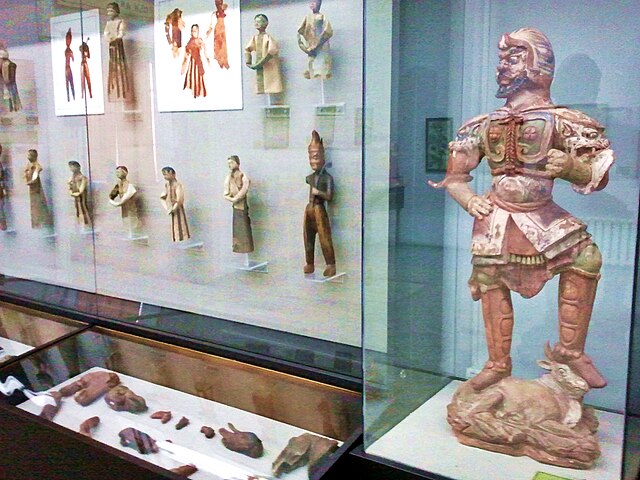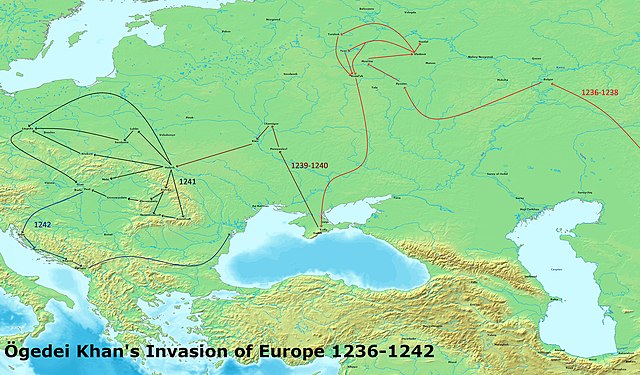The Slab-grave culture is an archaeological culture of Late Bronze Age and Early Iron Age Mongolia. The Slab-Grave culture formed one of the primary ancestral components of the succeeding Xiongnu, as revealed by genetic evidence. The ethnogenesis of Turkic peoples and the modern Mongolian people is, at least partially, linked to the Slab-Grave culture by historical and archaeological evidence and further corroborated by genetic research on the Slab Grave remains.
Slab grave. Exhibit in Ethnography Museum of E. Baikal peoples. Relocated from Horin region of Buryatia
Slab grave whetstone, Daram mountain, Eastern Mongolia.
Slab grave stone beads, Mongolia
Slab grave pottery, Narst, Bulgan, Northern Mongolia
Mongolia is a landlocked country in East Asia, bordered by Russia to the north and China to the south. It covers an area of 1,564,116 square kilometres, with a population of just 3.3 million, making it the world's most sparsely populated sovereign state. Mongolia is the world's largest landlocked country that does not border a closed sea, and much of its area is covered by grassy steppe, with mountains to the north and west and the Gobi Desert to the south. Ulaanbaatar, the capital and largest city, is home to roughly half of the country's population.
7th-century artifacts found 180 km (112 mi) from Ulaanbaatar
1236–1242 Mongol invasions of Europe
Genghis Khan, the first Mongol Emperor
The eighth Jebtsundamba Khutuktu, Bogd Khaan








